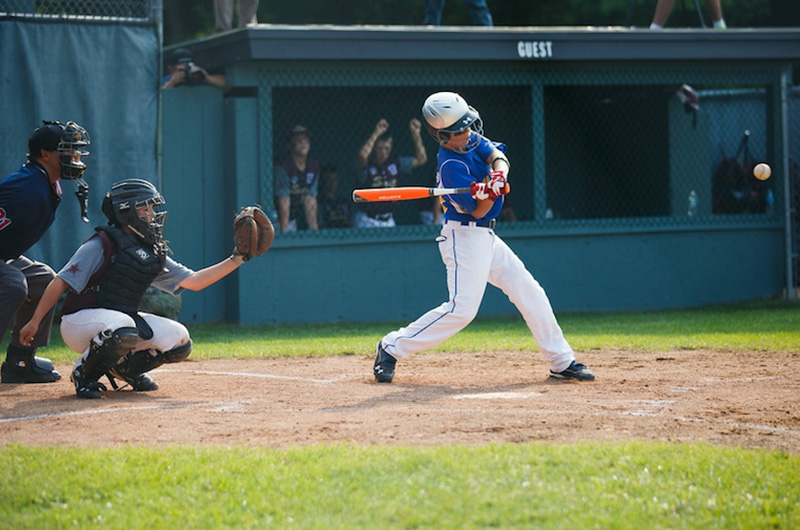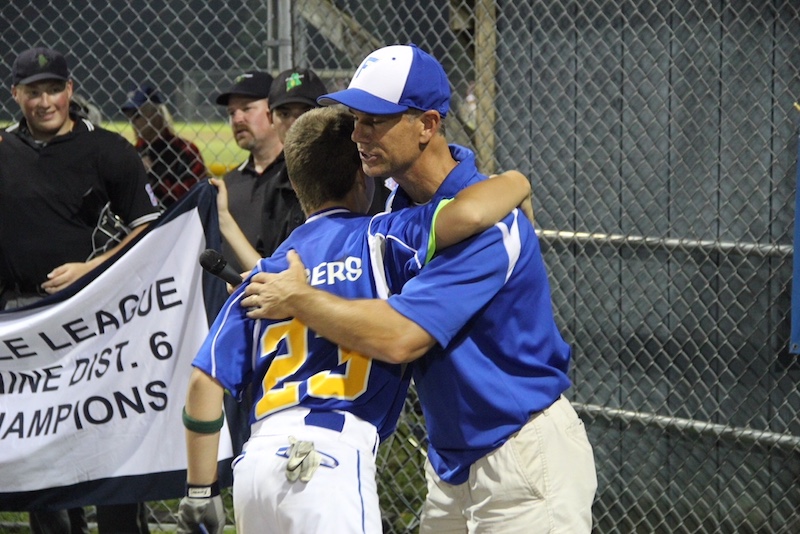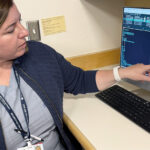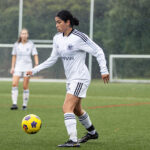Nate’s all-star recovery from an ACL tear

Just a few decades ago, a child who tore their ACL faced years of reduced activity and inability to participate in sports. Surgical reconstruction was not an option as long as a child was growing. The procedure required drilling through the growth plate, and would disrupt future growth in the child’s affected leg.
But in 1976, Lyle Micheli, MD, of the Sports Medicine Division at Boston Children’s Hospital, pioneered a new ACL reconstruction procedure that spared a growing child’s growth plate. Known as physeal-sparing ACL reconstruction, the procedure has been used to reconstruct ACLs in prepubescent kids at Boston Children’s ever since.
This is the procedure that Nate — a 12-year-old star baseball player at the time — underwent in 2013, after tearing his ACL playing football. Rather than rush into an ACL reconstruction surgery in their home state of Maine, Nate’s family researched the best ACL surgeons, and were ultimately referred to Mininder Kocher, MD, MPH, of the Sports Medicine Division at Boston Children’s.
I wanted to be able to play sports again — especially in my final year of Little League and beyond.
Nate
“We did some additional research and everything we were told and read was impressive,” says Nate’s dad, Matt. “Despite the longer wait to have him perform the surgery, we wanted the best result for our son — so we waited.”
Hoping to return to play
Almost two months after he tore his ACL, Nate had surgery at Boston Children’s Orthopedic Center. “I was worried that my knee would never be the same after surgery,” he says. “I wanted to be able to play sports again — especially in my final year of Little League and beyond.”
Luckily, chances were good that Nate would be able to make a full, healthy return to sports. A recent study led by Dr. Kocher found that two years after physeal-sparing ACL reconstruction, 90 percent of patients are able to return to their sports, with only 5 percent needing another ACL surgery. Better yet, none of the nearly 250 patients in the study had any growth disturbance as a result of the surgery.
We do our part by fixing the knee, but the patient has a lot of work to do — and the (physical) therapist does as well.”
Dr. Mininder Kocher
As for Nate, after surgery he set about to do everything he could to get back on the baseball field. “The pain the next day was pretty bad,” he recalls. “So I was doing physical therapy three times a week, but I also opted to do an additional two times a week for core balance and strength as well.”
This extra PT is something Kocher actively encourages with his patients. “I think it’s really a partnership between the surgeon, the patient and the patient’s therapist in terms of recovering from the surgery,” he says. “We do our part by fixing the knee, but the patient has a lot of work to do — and the therapist does as well.”
A team effort
Along with his surgeon and physical therapist, Nate had his family behind him to support his recovery every step of the way. His parents took turns staying by his bedside 24/7, making sure he was comfortable and always had a fresh ice pack. “It surely was a team effort, but I will tell you that Nate was a champion throughout the entire process,” says Matt. “His mental, physical and spiritual strength uplifted me many, many times.”

Just five months after surgery, Nate was back to playing baseball — but still continued his PT regimen. An ACL tear is a devastating injury for any athlete, and many would be happy just to return to their sport so quickly, but Nate had bigger goals. He would go on to make the All-Star team at the end of the Little League season. With his help, the team won the district championship, then the state championship, and came within one game of going to the Little League World Series in Williamsport, Pennsylvania — the Mecca of youth baseball.
Before they could advance to playing for a shot at Williamsport, Nate’s team was trailing 4-0 in the Maine State Championship — but not for long. On his newly reconstructed knee, Nate hit a grand slam and a 3-run homer to put his team ahead and bring his hometown their first state championship in almost 50 years. “It was amazing! It certainly proved to me that hard work pays off,” Nate says.
Baseball as a way of life
Since his Little League success, Nate has gone on to play for two state champion Babe Ruth teams, one of which advanced to the Babe Ruth World Series. Just one year after surgery, he was back to feeling 100 percent confident in his knee, and doesn’t wear a brace for any activity.
Undergoing an ACL reconstruction gave Nate the chance to work toward his goal of continued achievement in baseball. “Baseball was clearly a big part of his life,” says Kocher. “Sometimes young kids who tear their ACLs are told they have to wait until they’re older to have surgery, and they need to stay out of sports. But for them to not be able to participate is a huge loss. This surgery gives them the chance to get back to doing what they love.”

Nate currently plays for his high school baseball team, as well as a travel team and Under Armor’s Baseball Factory team. Needless to say, he sees baseball as a big part of his future, and hopes to play in college. Looking back on his injury and recovery, Nate values the team aspect of this journey as well. “I could not have done this without my ‘team,’ which started with my mom, dad, sister Liza, Dr. Kocher, my PTs, my coaches and, of course, my teammates. No one has ever hit a grand slam without teammates on base, so it wouldn’t have been possible without them.”
Learn more about the ACL Program at Boston Children’s Hospital.
Related Posts :
-

Ask a sports medicine specialist: Why are ACL tears so common among female athletes?
When an athlete is sprinting after an opponent who suddenly stops or changes direction, their anterior cruciate ligaments (ACLs) make ...
-

Forging a path back to school after orthopedic trauma
Orthopedic trauma can force children to miss school, sometimes for an extended period. But even when patients have regained enough ...
-

Jackie’s dreams of playing professional soccer back on track after ACL surgery
From her dorm in Newcastle, England, Jackie Zapata can hear fans roaring in the soccer stadium a few blocks away. ...
-

What orthopedic trauma surgeons wish more parents knew about lawnmower injuries
Summer is full of delights: lemonade, ice cream, and fresh-cut grass to name a few. Unfortunately, the warmer months can ...





